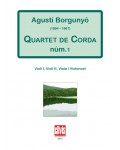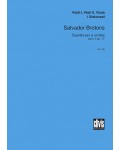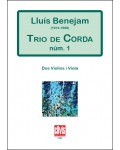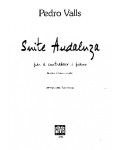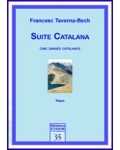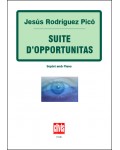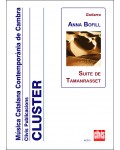
No products
Prices are tax included
Product successfully added to your shopping cart
There are 0 items in your cart. There is 1 item in your cart.
- English
- Castellano
- Català
List of products by supplier: CLIVIS Publicacions
-
-
-
-
String Quartet no. 2
Edition: DigitalIn this work the composer experiments with the technique of applying sculpture to music. At the same time he incorporates improvisations with the sole purpose of letting out his feelings and constructing emotional structures, and it is then that the notes cease to have any real importance in themselves.
18,76 € -
String trio no. 1
Edition: PrintedIn his String Trio No. 1 (1956) Lluís Benejam plays with the sounds of two violins and a viola from a classical premise yet with a modern spirit.
31,20 € -
String trio no. 1
Edition: DigitalIn his String Trio No. 1 (1956) Lluís Benejam plays with the sounds of two violins and a viola from a classical premise yet with a modern spirit.
18,15 € -
Suite Andaluza
Edition: DigitalThis work contains two main qualities that make it very special, the technical challenge for the performer and their characteristic features of Spanish music.
12,10 € -
Suite Andaluza
Edition: DigitalThis work contains two main qualities that make it very special, the technical challenge for the performer and their characteristic features of Spanish music.
12,10 € -
-
Suite Catalana
Edition: DigitalThese pieces also have a didactic side to them which makes them suitable for intermediate level piano teaching, with technical difficulties including elaborate piano formulas such as hand cross-overs, arpeggiated chords and three-stave notation, to be gradually overcome by students.
7,85 € -
Suite d'opportunitas
Edition: DigitalThe origin of Suite d'Opportunitas lies in the chamber opera entitled Opportunitas (Fàbula musicomòrfica) with libretto by Georgina Rabassó and music by Jesús Rodríguez Picó that debuted at the Altaveu Festival in 2004.
11,22 € -
Suite de Tamanrasset
Edition: DigitalWas composed in 1978 following a visit to Algeria and the Sahara desert, Tamanrasset. The premiere was in 2006 by the Australian guitarist Rene Mora. The Suite de Tamanrasset is structured into four movements in which liberty and the sensation of improvisation prevail, while at the same time exploring the various resources of the guitar.
5,82 €

